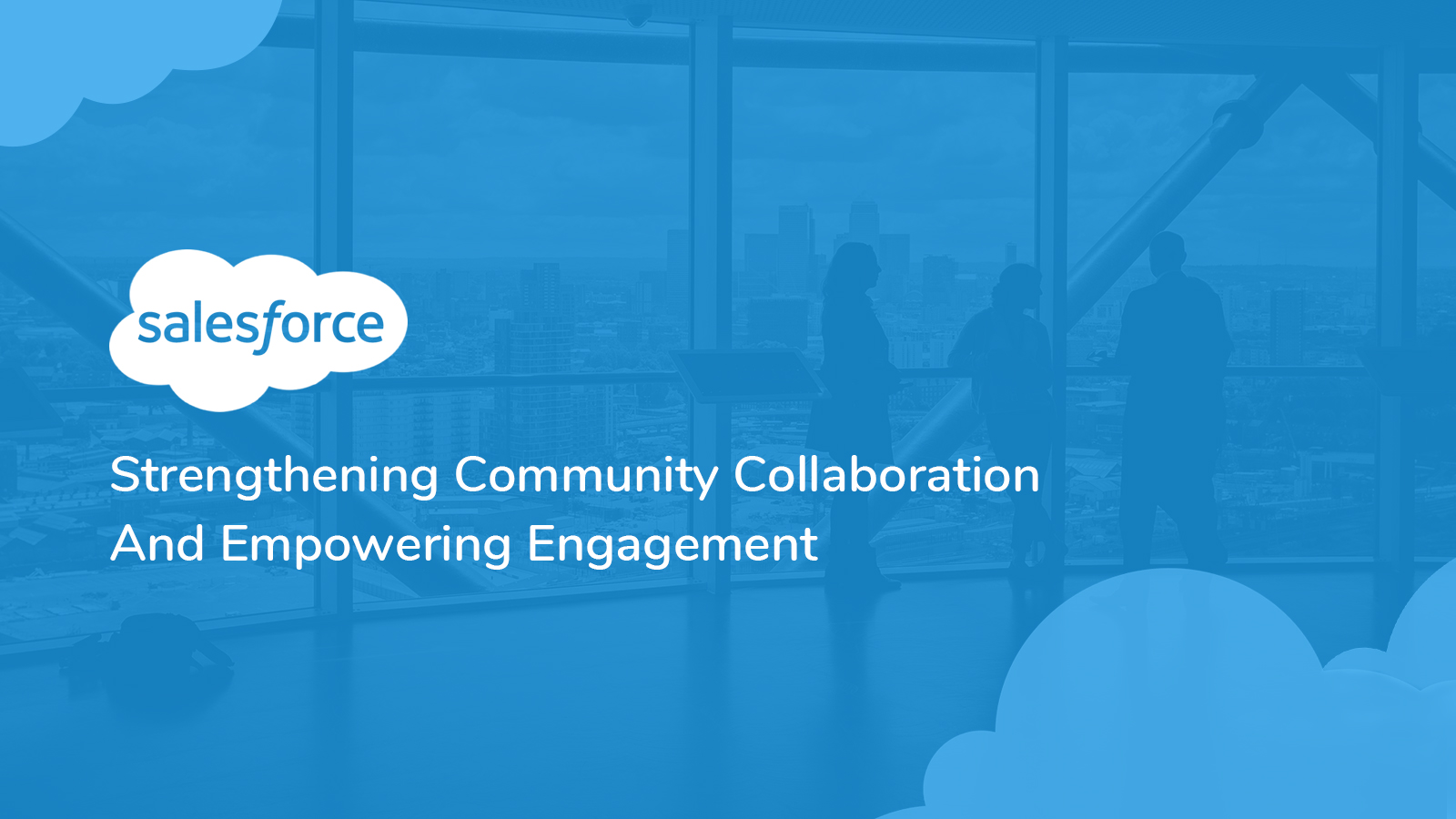Communities are integral to transform the way businesses interact with their partners, customers, and employees. As per a study done by the University of Michigan, customers residing in communities spend at least 19 percent more than the ones who are not engaged.
Today, more and more businesses are unlocking the real benefits that come with online communities. As an end-to-end online ecosystem, communities help enterprises bring customers, partners, and employees under one digital roof.
Leveraging an online community platform, a business makes an interactive engagement platform where key stakeholders connect, collaborate, innovate, and communicate.
Salesforce Community Cloud is one such robust online ecosystem that is enabling the next generation of enterprises to accelerate time to value.
Driving Business Collaboration With Community Cloud
Salesforce Community Cloud enables businesses to connect customers, employees, and partners with one another. This way, Community Cloud is a one-stop destination for empowering stakeholders to find the right data records and share them to get the work done seamlessly and quickly.
For example, this next-gen portal capitalizes on the concept of mobility for enabling its members to find a dataset, file, or record anytime, anywhere. Best of all, Salesforce Community Cloud enables a business to fire up quality collaboration at every level of an enterprise by creating multiple communities.
For creating a seamless branding experience across the board, businesses can even customize Community Cloud to develop a full-fledged branded space. All in all, Community Cloud helps a business streamline its mission-critical business functions from internal spaces such as offices and departments to external landscapes of partners and customers.
That way, a Salesforce infrastructure enables everyone in a business ecosystem to meet their respective goals such as resolving tickets, closing deals faster, and getting more work done.
Different Communities For Transforming Different Engagement Models
Community Cloud is transformative across different business functions for generating game-changing growth ideas, winning new leads, and establishing deeper bonds with customers. Overall, Community Cloud is divided into three different categories.
Partner Communities
Businesses, now, make collaboration more streamlined by sharing the right level of information with their partners. When building a partner community, a business has to host everything in a single location while targeting the right audience at the right time without relying on confusing trail mails.
Employee Communities
Let the enterprise workforce reach new levels of productivity by giving it the right tools for doing its job efficiently. Employees leverage Community Cloud for constructing trailblazing employee culture and giving necessary shout-outs for the most deserving coworkers.
Customer Communities
Being the most important infrastructure for fostering relationships with customers, Cloud Community that is geared toward customers is an absolute must. These online ecosystems enable customers to get connected with the brand and their peers easily. At the same time, a brand can leverage this specific Community Cloud for harnessing new insights into customers’ buying behaviors and psychology.
Now that it is clear what purposes do different communities serve, let us dive into the process of implementing Community Cloud.
Things To Know Before Implementing Community Cloud
Deploying Salesforce Community Cloud is one of the best ways to extend the web portal’s functionality to customers, employees, partners, distributors, suppliers, and resellers.
In this section, we will dive deep into a proven tech road map for deploying Community Cloud from scratch.
Enabling Salesforce Communities
Building Community Cloud involves carrying out a range of tasks that have to be performed within the Salesforce setup.
Businesses should base Community Cloud either on the preconfigured templates of Lightning Community or on standard Salesforce functionality. Being a modern Salesforce UI, Lightning Community templates come with drag-and-drop components making the implementation process simpler and faster.
With communities, businesses can share a complete subset of data and features present within an internal Salesforce org. It is worth noting that Cloud Community resides in an enterprise org and can be accessed using Lightning Experience’s App Launcher. Or just in case a business is still using Salesforce Classic, it can access the communities with the global header.
Here are the steps that have to be followed for establishing Community Cloud.
1. From setup, find the Quick Find Box where Communities Settings have to be entered. Afterward, select Communities Settings.
2. Select Enable Communities.
3. Pick a domain name for Community Cloud; the domain name should not be in use already. Go for a name that is easily recognizable and remembered by community members.
4. Finally, click on the Save button.
If needed, it is essential for updating org-wide Community Cloud settings. That way, enterprises will set up rules for objects, roles, sharing, and permission that will affect all the communities created in an org.
But a business can easily get overwhelmed and confused when it comes to effectively managing Community Cloud. For that reason, it is necessary to find an ideal Salesforce technology partner that will help businesses unlock multiple strategic benefits of this new-age engagement infrastructure.
Salesforce Community Cloud Deployment Partner
Whether it is building lasting relationships with customers or bringing down service costs, a business can get maximum mileage out of Salesforce Community Cloud. Except if the business in question has firsthand experience of working within the ecosystem. For all those businesses that are starting their journey in the exciting world of Salesforce, however, it is easier to get confused in the platform’s nitty-gritty.
Here is where Flexsin comes into the picture.
As a dependable Salesforce partner, Flexsin has helped countless businesses unleash the true capabilities of Community Cloud. Having a proven track record of creating empowering communities and driving quality engagements across them with its Salesforce implementation and consulting solutions, this technology partner has helped enterprises collaborate in much more meaningful ways.
If any business is looking to make the most of Community Cloud, Flexsin will help in not only establishing multiple communities but also securing them at scale.


 Jeet
Jeet


